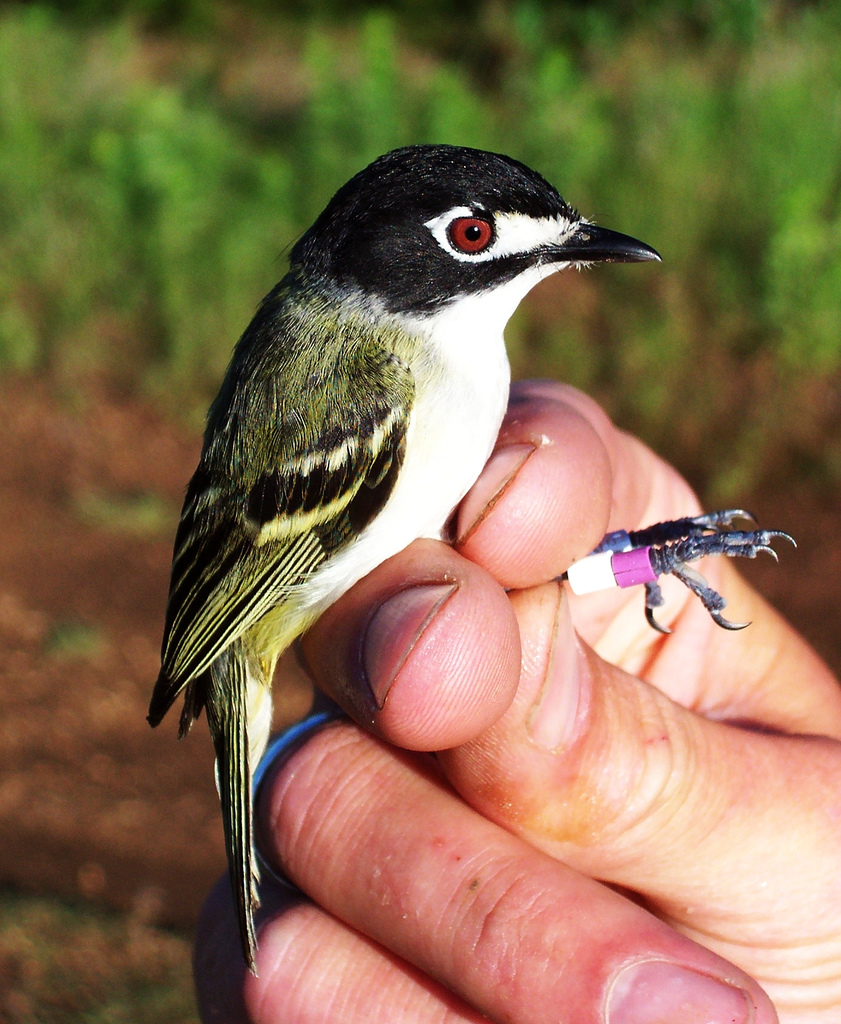
Vireo atricapillus
TAXONOMY
Vireo atricapillus Woodhouse, 1852.
OTHER COMMON NAMES
French: Virйo а tкte noire; German: Schwarzkopfvireo; Spanish:
Vireo de Capa Negra.
PHYSICAL CHARACTERISTICS
About 4.5 in (12 cm); a small vireo with olive-colored upperparts,
white underneath, a yellow wash beneath the wings, yellow
wing-bars, and a red iris. Males have a glossy black head
and white eye-rings that resemble eyeglasses. Females are similar,
but the head is slate gray.
DISTRIBUTION
Breeds in parts of Texas, New Mexico, Oklahoma, Missouri, and
north-central Mexico; winters along the west coast of Mexico.
HABITAT
Open, grassy woodlands with clumps of shrubs and trees.
Prefers the low-lying vegetation that grows back after a fire in
juniper and oak woodlands.
BEHAVIOR
A short-distance migrant. Defends a breeding territory. The
song is a series of slowly repeated, husky, complex phrases.
FEEDING ECOLOGY AND DIET
Primarily feeds on invertebrates gleaned from leaves of trees
and shrubs, but also eats small fruit.
REPRODUCTIVE BIOLOGY
Builds a cup-shaped, hanging nest at a branch fork of a shrub
or low tree. Lays three or four eggs, which are incubated for
14–19 days.
CONSERVATION STATUS
Not threatened by IUCN criteria, though some populations
are threatened by habitat loss caused by agriculture, mining,
flood-control projects, and reservoir construction. Subject to
severe nest parasitism by cowbirds. In 1986, the U.S. Fish and
Wildlife Service placed it on the U.S. Endangered Species List
in recognition of extensive habitat loss and damage. Efforts are
underway in Texas and Oklahoma to trap cowbirds and remove
them from nesting areas of the black-capped vireo. The Fish
and Wildlife Service regulates human activities in critical riparian
HABITAT
used by the black-capped vireo.
SIGNIFICANCE TO HUMANS
None known.
Other popular Animals
Photo Gallery of - Black-capped vireo
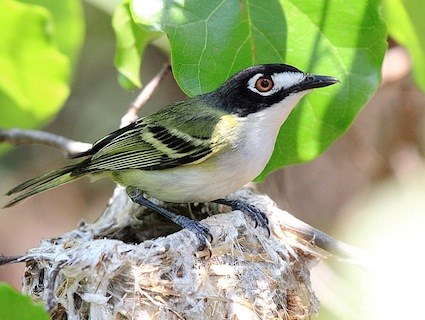
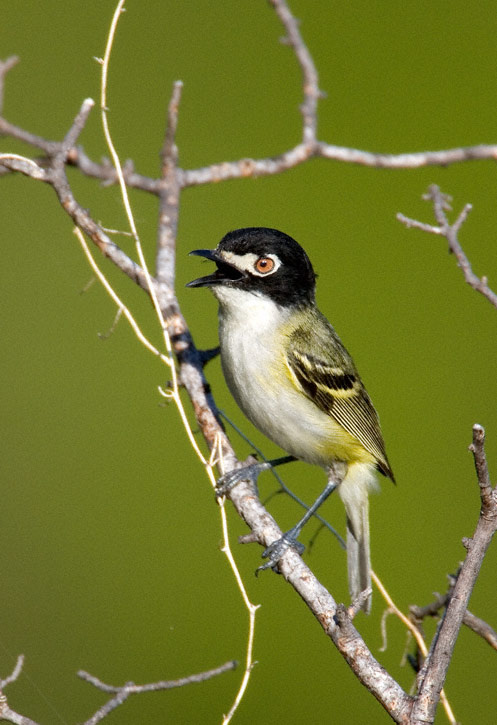
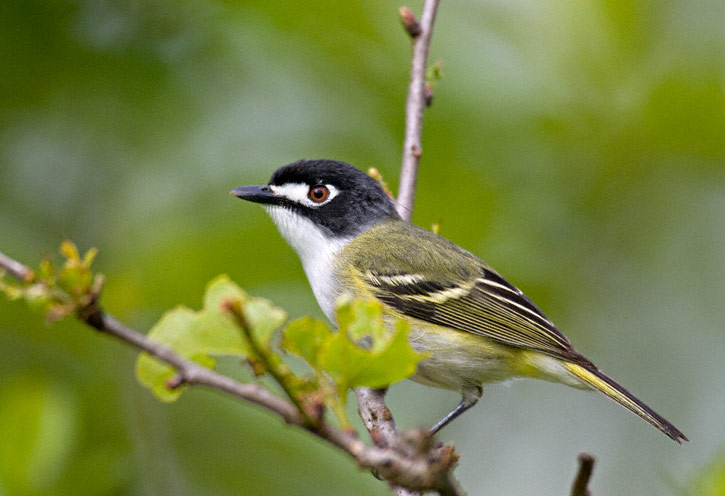
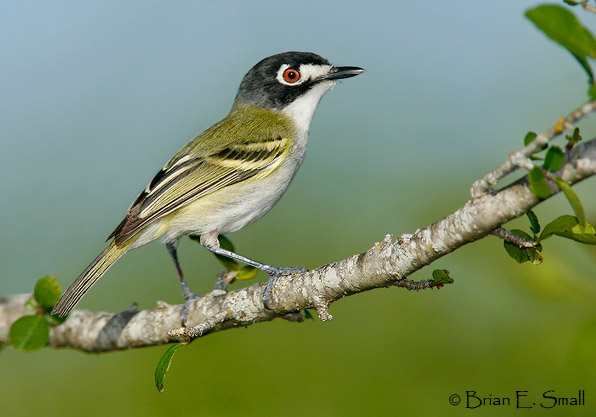
 Animalia Life
Animalia Life